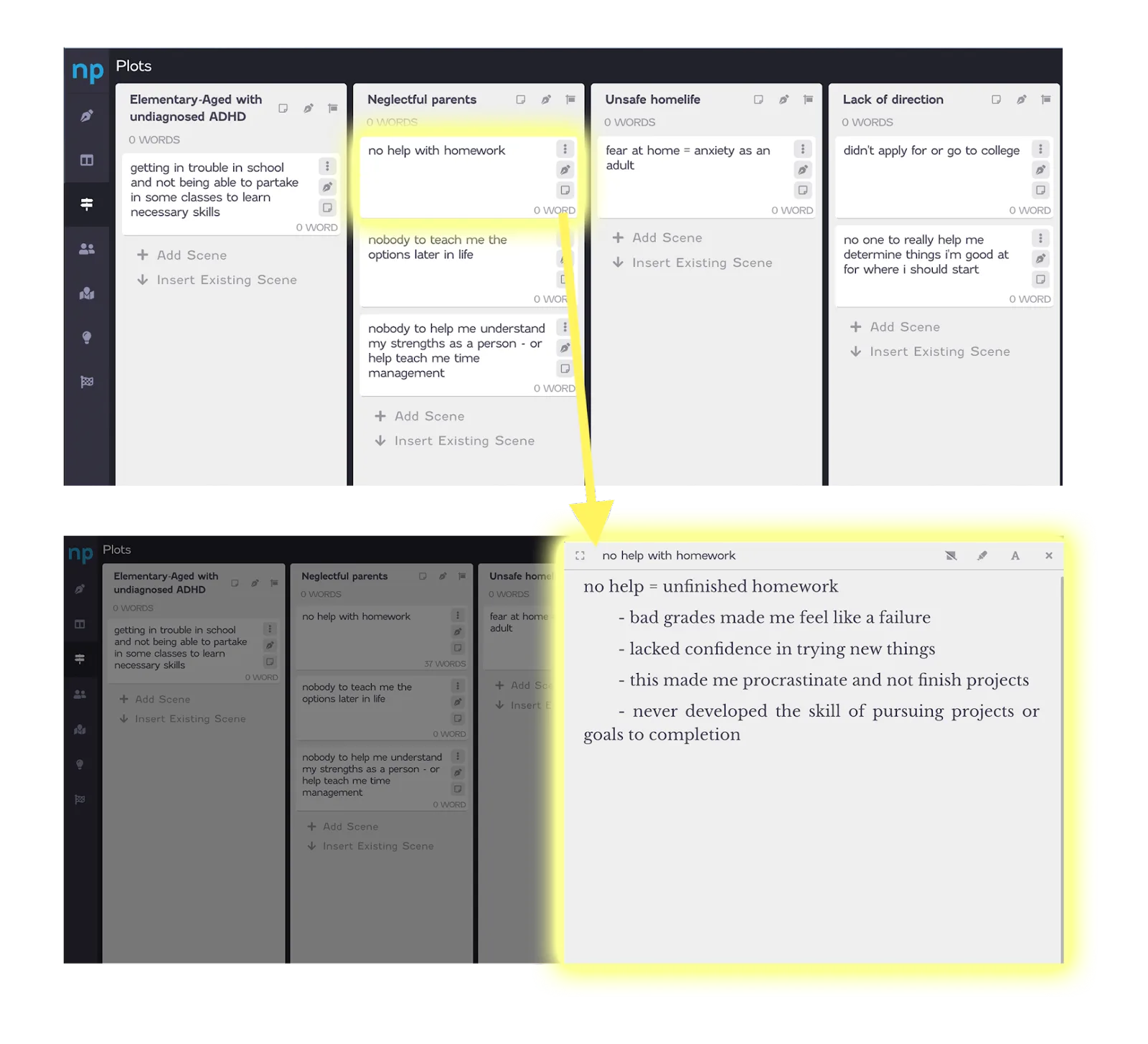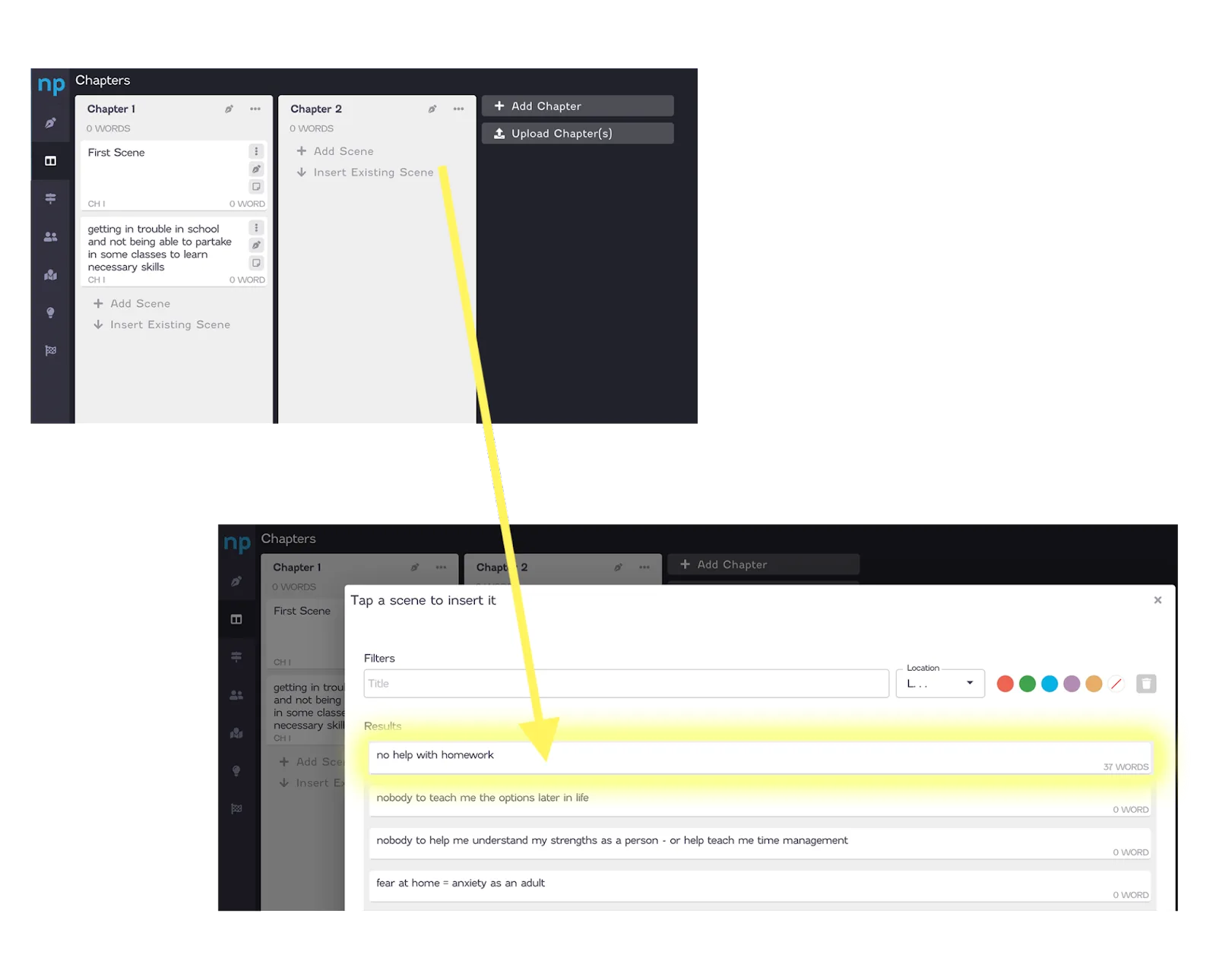How to Outline a Self-Help Book That’ll Sell in 2024
Bella Rose Emmorey
book editor, rogue behaviorist, digital marketer, writer, brand builder, plant aunt, and cheese enthusiast.
You don’t have to be someone famous to learn how to outline a self-help book—or to write one. You don’t have to be a psychologist or expert, either.
All you need to write a good, quality book that actually helps people handle a challenge you’ve been through.
The truth about humans is that we all think we’re alone in our suffering. But there are thousands—maybe millions—of people who can relate to the root of the challenges we’ve faced in our lives.
That means there are people who may benefit from your unique outlook and advice on the situation.
Which is what a self-help book is at the end of the day, right?
But you can’t go into writing this book without a plan. Otherwise, you’re likely to write a book full of your own vent sessions, with little to no actual help to others.
Despite the term "self" help, the book actually isn’t to help yourself.
It’s meant to help someone else’s self.
So let’s break down how to outline a self-help book that’ll not only sell well, but will actually help people in the process.
1. Identify Your Perspective
To some degree, people will buy your book for the content. But what they care about more is what perspective the advice is coming from.
Who wants to learn how to manage finances from someone who’s always had money handed to them with no debt?
Not many. The perspective of those teachings isn’t coming from a place they can relate to.
Your perspective will dictate how to outline a self-help book that will actually speak to certain people. But how do you determine what that is?
Let’s say you want to write a self-help book about how to work your way out of a challenging childhood and find happiness as an adult. It’s very basic, but I’ll show you how this simple idea starts to sharpen and dictate the content of your book with the perspective you already possess.
Because your perspective isn’t from someone who had a difficult childhood.
Get more specific by answering some of these questions:
- What is something that describes you as a kid? A diagnosis or a specific characteristic or trait.
- What ages specifically did the challenges that stuck the most occur?
- What were your surroundings like as a child (what did your home look like, neighborhood, type of people in your vicinity)?
- What were your parents or guardians like? Get specific.
- How can you describe the lingering effects of that life in a few words?
- What have those challenges left you with as an adult?
As you can see, if we answer some of these questions, the perspective finds itself.
You go from:
Someone who had a difficult childhood.
To:
An elementary-aged child with undiagnosed ADHD, neglectful parents in an unsafe home life, who grew up with no direction in life and few skills to both discover what you want and then get it.
The latter becomes your perspective.
Interestingly enough, the perspective you take to learn how to write a self-help book then becomes your target demographic.
2. Narrow Your Audience
You can’t help everyone. If you want to learn how to outline a self-help book that does help everyone, you’re in the wrong place.
In order to actually sell books, you have to get specific about who you want to buy that book. How you write it and the entire messaging of your book marketing will rely on who you’re trying to get the attention of.
Attracting the attention of someone who wants to heal from an eating disorder will be very different from someone who wants to overcome their deep-rooted self-doubt in creativity.
Both of those would be self-help in nature, but those books are completely different.
This part is actually easy though.
The audience of your self-help book is past you—or someone who had very similar challenges as you.
The perspective gives you clues about your audience. If this is your perspective:
An elementary-aged child with undiagnosed ADHD, neglectful parents in an unsafe home life, who grew up with no direction in life and few skills to both discover what you want and then get it.
Then who is your audience? Right, someone who grew up with undiagnosed ADHD, neglectful parents in an unsafe home, who also struggles to find direction in life.
You’re just someone who figured it out, and are now imparting your wisdom to those who haven’t. As you learn how to outline a self-help book, keep the audience in mind and only put in the ideas that serve this audience.
3. Determine the Theme
You might be surprised to learn that the overarching theme of your book relates to your perspective.
It should solve the lingering challenges from your perspective.
In the case of the example above, that would make the theme of your self-help book:
No direction in life and few skills to both discover what you want and then get it.
The theme, then, revolves around helping someone discover their direction in life and teaching them the skills to pursue it
Now take your book idea and write out the theme in a single sentence.
In the next step for how to outline a self-help book, you’ll combine this theme with the branches that create it.
4. Generate Theme Branches
If your theme is "discover your direction and gain the skills to get it," then you need to support this theme through each phase of the book. Specifically, you’ll have to include a few areas in your self help outline:
- Personal stories and experiences
- Educational research and findings
- Other people’s stories and experiences
- Solutions to the challenges that arise in those stories
This theme comprises several elements. Shocker, your perspective comes in handy again. Because the very stories, research, and solutions you’ll need to uncover are from the causes of the challenge you’re solving for your readers.
You can do this several ways, including through a mindmap or bullet point list, but I like to use my $ writing software$ to create Plots for each of the main components that contributed to this challenge in my life.
Then, I create Scenes to brainstorm the various elements I can remember that make up those components.
Here’s an example of what this looks like:

Using the example above, this would look like including undiagnosed ADHD stories and challenges, home life, and stories about floundering as an early adult.
After you create those Plots, you then create Scenes that should be the various memories or stories you’d have related to it. Then, open each and jot down details about those stories and how they would affect the main theme of your story.
5. Create the Structure
Once you have these details, create the structure by choosing which elements you will keep and which you will remove from the book. Not everything you include when learning how to outline a self-help book will actually stay.
Remember: keep only the stories, memories, and details that fulfill the theme of the book.
This helps ensure your audience will not only get help from the book, but it helps readers identify this as the right book for them based on what they’re seeking.
There are various ways to structure a self-help book, but for now, you can think of each of these components as sections.
Each section of your book will have chapters.
6. Outline the Chapters
Because a self-help book contains personal stories, research, and solutions, each section can have chapters that reflect these.
You can literally just use this structure for each section and chapter:
Section 1:
> Chapter 1: stories and examples of section
> Chapter 2: research / data to confirm
> Chapter 3: solutions
Section 2:
> Chapter 4: stories and examples of section
> Chapter 5: research / data to confirm
> Chapter 6: solutions
The way I do this in my writing software is to go to the Chapters tab, and hit "Insert existing scene" and choose from the ones I brainstormed earlier.

From here, you do the research necessary, and write! It really is that simple. By learning how to outline a self-help book this way, you’re guaranteeing your advice is rich from your own experiences, well researched, and helpful to the specific people seeking your help most.
Like what you're reading?
Join other authors like you in NovelPad’s free writing community!
Join the communitySimilar Posts
What File Formats are Accepted by Kindle Direct Publishing?
File types for ebooks, paperbacks, and hardbacks on Amazon's KDP.
Ollie Ander
Is probably just a couple cats in a trench-coat—the hair shedding and sunlight napping are highly suspect.
When is the best time to publish a horror novel? [Peak Sales Method]
Make the most of your horror book launch by strategizing with these tips.
Bella Rose Emmorey
book editor, rogue behaviorist, digital marketer, writer, brand builder, plant aunt, and cheese enthusiast.
How To Write Strong Atmosphere In Stories
7 best tips for creating strong atmosphere in your writing.
Hannah Lee Kidder
NovelPad Author
The Writer’s Resolution Guide 2024
Goal ideas and strategies for your new writing year.
Sage Kay
Writer, reader, outfit repeater.
When is the best time to publish a romance novel?
What is the best month and day of the week to publish a romance? Do romance novelists make money?
Rina Fontes Malka
A writer with too many ideas and not enough time.
What is a ghazal? The essence of emotion in poetry
Definition, examples, and history of the ghazal poem.
Hannah Lee Kidder
NovelPad Author